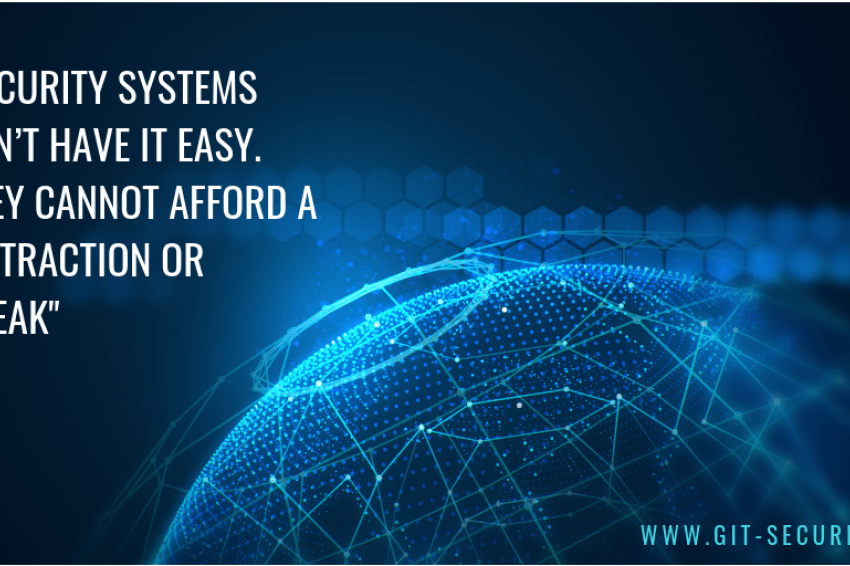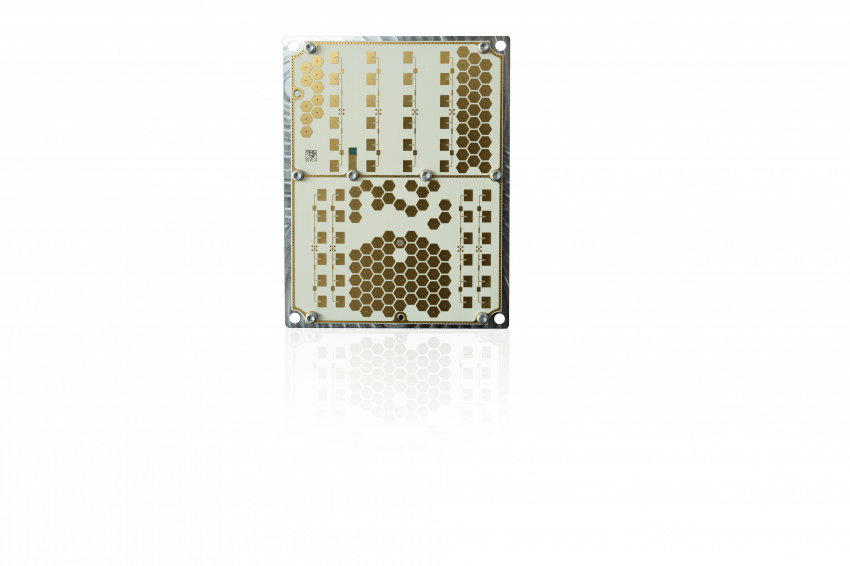The Next Big Thing in Security?
Radar as an Alternative to Classic Security Solutions
Despite advanced technologies, some challenges of the security sector have not yet been mastered so far. A new solution is required.
Security systems don’t have it easy. The high demands they are subjected to, such as the need for permanent readiness and fault-free functioning, really take a toll on them. They cannot afford a distraction or break. This is because failures in the security concept usually have disconcerting consequences. However, it is not only the fear of consequences, but also humans’ essential need for protection and security which drives the security industry to improve its products. Industry manufacturers aim to achieve the maximum-possible security standard with their systems. Finally, reliable technology is absolutely essential to the security sector. But even high-quality models sometimes reach their limits.
Surveillance Challenges
Technological change, with its impressive innovations, also benefits the security industry. The security market is booming. Amazing perspectives, high-resolution images, clever networking and sophisticated functions are state of the art. However, manufacturers are struggling with the troubles that come along with the respective nascent technology. One cause for headaches, among others, lies in environmental factors. Outdoor surveillance systems are concerned in particular. Light, weather and temperature influence the operational capability of most of the products. Common camera lenses are struggling with the glaring sun or the pitch-black night. Pouring rain or snow flakes which settle on the popular optical solutions disrupt image transmission. Biting cold, squelching humidity and scorching heat, negatively impact active and passive infra-red processes.
Another disadvantage is how easy it is to manipulate the installed equipment. If people use spray paint on the camera lens or mask their faces, image transmission is rendered futile. If they wear heat-insulating clothing in the winter, a PIR sensor will not detect the culprit. Moreover, CCTV and infrared systems are placed in spots highly visible to end consumers in order not to restrict their functionality. But easily recognisable security systems virtually ask to be vandalised. One quick swing and the expensive equipment is destroyed.
Many users solve this issue with additional personnel or a watch dog. The effort expended for security is tremendous. If no costly image analysis functions are available, then experts analyse an enormous amount of video material every day. Always attentive and pushing their limits. Strict regulations such as the current issue of data protection increasingly concerns users of video surveillance.
Consumers forgive the sensitivity of PIR sensors, laser, ultrasound and security cameras. Because the benefits, such as the high-resolution recordings, impress them. So far, a sensible solution to the issues or a good alternative seemed to be far away. Optimising security surveillance and supporting existing concepts is a difficult task. But it is not impossible.
What the Industry Has Been Waiting for
Radar technology was not discovered for industrial use for a long time. Its complexity made this difficult. Since simple systems such as door-opening sensors have been conquering the market, the industry has become increasingly excited about the microwave-based method. Thanks to years of experience gained from various applications and technological progress, the measurement technology has become a qualified alternative to common practices in the security sector. This technology – as a supporting or stand-alone measure – will not go unnoticed in the security industry.
What Can Radars Do?
Radar is a localisation procedure in the radio frequency range. Sensors send a signal that is reflected by an object in range. Using electromagnetic waves, users receive information about the presence, exact position (angle, distance), speed and direction of movement. All of this information is useful for security: If a person approaches a protected building, staff members responsible can assess the risk of danger thanks to position tracking, movement patterns, distance and speed.
The compact sensors are protected against vandalism, well hidden behind a simple plastic cover or an exclusive design. The presence of several suspects is not a problem for radar either. Nobody is out of sight. The sensor focuses on the essentials; interfering factors are ruled out using classifications and filter properties. If users define a danger zone, only relevant areas are monitored. Uninteresting areas, e.g. outside the company premises, are excluded. Even tried and tested motion detectors in alarm systems benefit from these functions. The filters and categorisation prevent false alarms caused by small and wild animals or pedestrians. Complex radar systems offer configuration possibilities which adjust the sensitivity of the device. And they offer important information for a smart tracking application. Based on all these data and functions, professionals assess the danger situation faster and with greater ease.
Why Radars Can Be Better Than Other Surveillance Technology
Radar is an extremely robust technology. While other security procedures reach their limits, radar shines with its skills. Because the technology is insensitive to extreme temperatures, poor weather conditions or adverse lighting conditions. This means full functionality in spite of extreme conditions such as noise, dust, fog, pressure or humidity.
The detection range also opens up new perspectives for the security industry. Thanks to the anonymity of the data and the high range, large areas such as industrial sites can be monitored with just one system and without collecting personal information. For area and perimeter surveillance, nearly every security concept includes the use of radar sensors.
Where Are the Weaknesses?
The technology displays weaknesses only when security personnel wish to identify the culprit or review certain actions. Combined with a video camera, the system is unbeatable and offers a new type of security surveillance. The two methods complement each other perfectly. As a positive side effect of this dual approach, the sensor controls the camera as required and targets it. The camera films only when there is an actual necessity. The lens is guided via radar-based localisation and focused on the moving object. Without neglecting possible other incidents within the scope of coverage. The fusion of radar and CCTV is highly efficient, saves power and reduces the flood of data.
For Which Application Areas Are They Suitable?
From near to far, from simple to complex – radar systems already cover a wide range of security applications. Whether in a team, combined with other technologies or by itself. The application possibilities are not nearly exhausted. Ongoing further development is constant offering new potential for the security industry. And in an extremely wide range of areas: from protective measures in private homes to safe work in a production facility.
In smart homes, radar will also provide more security in the future. Automatic control as a reaction to the presence or absence of a person will be of great significance in this area. For example, sensors connected to devices switch to standby mode as soon as there is no person left in the house. The issue of forgetting to switch off the stove no longer arises, because these home automation applications take on the tasks. If children approach a dangerous area such as stairs or a hot furnace, the radar detection activates a fully automated protective barrier.
Even in the Industry
For the industry, the electromagnetic measuring process is becoming increasingly more interesting beyond the field of building and property protection. Smart sensors make a major contribution to safety between humans and machine. Radar-based warning and reminder functions are important measures in order to prevent collisions or painful contact with toxic materials, for instance. Factory owners are thus able to keep employees safe from work accidents and protect machines and buildings from damage.
Radar is one of the future technologies decisively involved in technological change. It enables greater convenience and freedom from worries and there is no way around this asset for the growing security market.











